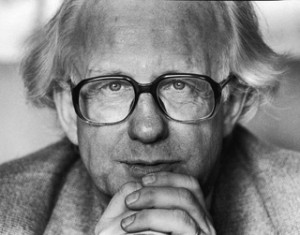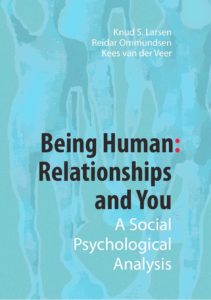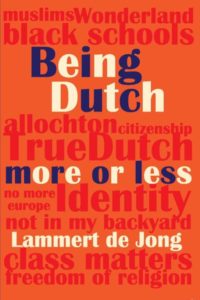In Memoriam Johan Galtung (1930-2024)

Johan Galtung
12-09-2024 ~ “A very important reason for forbidding nuclear weapons and other weapons of mass destruction is that they increase the threshold for what is acceptable.”
A conventional war is often defended by saying it did not go nuclear.
The international legal framework for warfare is already a victim of nuclear arms and can only regain its validity by forbidding that insult perpetrated on humanity. (Galtung 2017).
Professor Johan Vincent Galtung, who passed away on February 17, 2024, is generally know as the founder of the academic discipline or interdisciplinair field, of Peace Research. He started in 1964 the Institut for Fredsforskning (PRIO) in Oslo, Norway. But he himself was much more than an academic. During and after his academic career, he was appointed ten times Dr Honorios Causa and was holder of the Right Livelyhood Award (aka Alternative Nobel Peace Price) 1987.
Let me focus on a few of his many abilities, like his research, his contribution to social science and his practice in creative conflict solution. And memorizing him is for me not possible without paying attention to my personal relation with him.
For me, and for many social scientist, Galtung became an inspiration thanks to his book on Theory and Methods of Social Research (London: Allen & Unwin, 1967). In that book he introcuced the basic concept of the data matrix. In short, the units and variables to be explored are given by the research strategy. Data collection is viewed as an effort to fill the data matrix with values, one for each combination of unit and variable. By data processing the matrix is brought on a form suitable for analysis. Analysis itself is treated step by step from simple tabulation and computation of parameters through hypothetis-formation to theory-building. This serves as the basis for statistical inference and finally the generalisation of hypotheses. So this book presents on a systematic way the basis for multivariate analysis in social sciences! Read more
Twelve Creative Ways To Foster Reconciliation After Violence

Johan Galtung
12-09-2024 ~ Based on his experience as a mediator in many conflict areas, the author discusses twelve approaches to reconciliation.
He concludes that no single approach is capable of handling the complexity of the situation after violent events, thus combining approaches makes more sense.
The parties involved in the conflict should be invited to discuss these approaches and therefore be able to arrive at the best combination for their own situation.
Key words: conflict theory, peace work, reconciliation
Reconciliation is a processed aimed at putting an end to conflict between two parties. It includes a closure of hostile acts, a process of healing and rehabilitation of both perpetrators and victims. Reconciliation processes often require the intervention of a third party. That party attempts to manage the relationship between perpetrators and victims (Galtung, 1998).
During the reconciliation process the victim can seek restitution for the harm from the perpetrator by having the perpetrator punishedor give compensation. Another possibility is that the victim ‘gets even’ with the perpetrator through revenge. This may bring some gratification, but it may not automatically bring healing from trauma.
The perpetrator may seek release from his guilt through submission, penitence or apology and asking forgiveness.
Since reconciliation essentially takes place between perpetrator and victim, either of them can block the process. In that case, the trauma and guilt live on, and eventually may fuel new conflicts.
In this article twelve different approaches to reconciliation will be discussed. Read more
Walking Stories
 Lisa, a fragile Indonesian woman, walked along the paths of Saint Anthony’s park. Saint Anthony is a mental hospital. Lisa was dressed in red, yellow and blue; I was looking at a painting of Mondriaan, of which the colours could cheer someone up on a grey Dutch day. She had put on all her clothes and she carried the rest of her belongings in a grey garbagebag. She looked like she was being hunted, mumbling formulas to avert the evil or the devils. I could not understand her words, but she repeated them with the rustling of her garbage bag on the pebbles of the path.
Lisa, a fragile Indonesian woman, walked along the paths of Saint Anthony’s park. Saint Anthony is a mental hospital. Lisa was dressed in red, yellow and blue; I was looking at a painting of Mondriaan, of which the colours could cheer someone up on a grey Dutch day. She had put on all her clothes and she carried the rest of her belongings in a grey garbagebag. She looked like she was being hunted, mumbling formulas to avert the evil or the devils. I could not understand her words, but she repeated them with the rustling of her garbage bag on the pebbles of the path.
When she arrived at an intersection of two paths where low rose hips were blossoming, she stopped and went into the bushes. She lifted all her skirts and urinated; standing as a colourful flower amidst the green of the bushes and staring into the sky. A passer-by from the village where Saint Anthony’s has its headquarters would probably have pretended not to see her, knowing that Lisa was one of the ‘chronic mental patients’ of the wards. Or, urinating so openly in the park may be experienced as a ‘situational improperty’, but as many villagers told me: ‘They do odd things, but they cannot help it.’ The passer-by would not have known that Lisa was a ‘walking story’, that she had ritualised her walks in order to control the powers that lie beyond her control. Lisa was diagnosed with ‘schizophrenia’ and she suffered from delusions. When she had an acute psychosis, she needed medication to relieve her anxiety. Her personal story was considered as a symptom of her illness. That was, in a nutshell, the story of the psychiatrists of the mental hospital. Her own story was different. Lisa was the queen of the Indies and she had to have offspring to ensure that her dynasty would be preserved. She believed at that day that she was pregnant and that the magicians would come and would take away her unborn baby with a needle. To prevent the abortion, she had to take refuge in the park and carry all her belongings with her.
The Dutch Black School: They Are Not Us
Lammert de Jong – Being Dutch. More or less. In a comparative Perspective of USA and Caribbean Practices Rozenberg Publishers 2010. ISBN 978 90 3610 210 0 – The complete book will be online soon.
‘An Inconvenient Truth’
In the Netherlands, ‘black’ is not black; it is ‘non-western’, including Moroccan, Turkish, and people of Caribbean origin, lumped together as allochtons. In government statistics, schools with more than 70% allochton pupils are generally classified as a black school; schools with less than 20% allochton pupils are graded as white. The black school concept is also used in relation to the surrounding neighborhood. Schools with more pupils of non-western origin than expected in view of the composition of the neighborhood are labeled blacker or, in the case of an over-representation of white pupils, whiter. A deviation of 20% or more between neighborhood and school population classifies a school as too white or too black (Forum, 2007). The number of primary schools with more than 70% allochton pupils is increasing; in Dutch nomenclature: the schools are becoming blacker.
The Dutch black school is a perfidious contraption that locks in children of non-western origin, while its black label flags an underlying apartheid syndrome to underscore for the True Dutch – intentionally or not – how different these allochtons are. Yet the black school touches an open nerve in the Netherlands, a sensitive reality that surpasses its statistical definition. On the one hand the black school reeks of apartheid, which the Dutch so bravely contest when occurring elsewhere in the world. On the other hand the True Dutch are well aware that their entitlement and unencumbered access to white schools is at stake when school segregation is tackled in earnest. So far Dutch counteraction is limited to research and some experimental desegregation projects.
The Dutch black school is embedded in the particular Dutch school system that funds public-secular as well as private-denominational schools. Once, the Dutch school system was driven by the accommodation of different beliefs. On the strength of their belief – church-religion or secular ideology – parents wanted a school for their children that adhered to the values, doctrines, and rules of their faith, and paid for by the state. [Note: In 2009 the Netherlands’ Council of State pointed out that publicly financed orthodox religion-based schools may refuse teachers who identify with a particular gay life style. The fact that a teacher is gay is not sufficient to deny a position, but if he or she is in a same sex relation and married in church or city hall, that may suffice, as such contravenes the orthodox rule that marriage is a holy sacrament between one man and one woman]
Denominational and non-religious schools emphasized particularity, a distinctiveness that corresponded with religious doctrines or ideological orientations. The principle of Freedom of Education (Onderwijsvrijheid) is enshrined in the Netherlands Constitution, art. 23. Over the years parents have come to believe that they are entitled to choose a specific school for their children, which is a travesty of the freedom to choose a particular type of school, based on denominational or secular definition.
Dutch politics wavers when coming to grips with the effects the black school brings – quite literally – home. Most parents don’t set out intending to discriminate, which makes a noble difference, and legally enforced segregation is not on the books. Nonetheless a segregated white-black educational system has become a reality, with most True Dutch children in better schools and having better school careers, and children of allochtons at the other end. And that with long lasting effects after the school years have come to an end. This type of school segregation stigmatizes New Dutch children for life, while reinforcing an allochton footprint that will divide the nation for years to come. Although most political parties assert that integration is the major social issue of our time, they fail to confront the black school with a sense of urgency. Dutch politics still has to acknowledge that the black school emblematizes the allochton population in the Netherlands with an explicit signature: They are not Us.
Black schools are a common feature in most major Dutch cities. So far the black school does not stand out in Dutch politics as a problem that must be solved urgently by law, regulation or in the courts. The black school seems more of an inconvenient truth than a critical social or political issue. To an outsider this must be surprising, given that the Netherlands is known for its rock-solid liberal reputation. How come then that the Netherlands has become a segregated nation? And do they discriminate against people of color? Do the Dutch not know how to handle the ethnic complexities of today’s multi-cultural society? Or is it a lack of compassion for those who do not belong to the white Dutch tribe: Discrimination or not, my children first. Or is it merely a matter of social-economic stratification, a distinction between advantaged and disadvantaged children, so that the Dutch black school is just a myth (Vink, 2010)?
Being Human: Relationships And You ~ A Social Psychological Analysis – Preface & Contents
 Preface
Preface
This book represents a new look at social psychology and relationships for the discerning reader and university student. The title of the book argues forcefully that the very nature of being human is defined by our relationships with others, our lovers, family, and our functional or dysfunctional interactions.
Written in easy to follow logical progression the volume covers all major topical areas of social psychology, with results of empirical research of the most recent years included. A common project between American and European social psychologists the book seeks to build a bridge between research findings in both regions of the world. In doing so the interpretations of the research takes a critical stand toward dysfunction in modern societies, and in particular the consequences of endless war and repression.
Including topics as varied as an overview of the theoretical domains of social psychology and recent research on morality, justice and the law, the book promises a stimulating introduction to contemporary views of what it means to be human.
A major emphasis of the book is the effect of culture in all major topical areas of social psychology including conceptions of the self, attraction, relationships and love, social cognition, attitude formation and behavior, influences of group membership, social influence, persuasion, hostile images, aggression and altruism, and moral behavior.
Table of contents
Introduction
1. The Theoretical Domain and Methods of Social Psychology
2. Cultural and Social Dimensions of the Self
3. Attraction and Relationships: The Journey from Initial Attachments to Romantic Love
4. Social Cognition: How We Think about the Social World
5. Attitude Formation and Behavior
6. The Influences of Group Membership
7. Processes of Social Influence: Conformity, Compliance and Obedience
8. Persuasion
9. Hostile Inter-group Behavior: Prejudice, Stereotypes, and Discrimination
10. Aggression: The Common Thread of Humanity
11. Altruism and Prosocial Behavior
12. Morality: Competition, Justice and Cooperation
References
ISBN 978 90 5170 994 0 – NUR 770 – Rozenberg Publishers – 2008
“Therefore this reading has a rare and valuable feature, that of making a link between American and European social psychology: “Being human: Relationships and you” is an excellent example of how the two lines of thought are actually articulated…it is clearly written, using a professional yet assessable language and therefore easy to read by even the non-specialist public…always pointing to the fact that social psychology is not “just a science” but it deals with issues that constitute the substance of our existence as humans”.
Being Human: Relationships And You. A Social Psychological Analysis ~ Introduction
 The roots of Psychology are international, but so is psychology. A major figure in the history of psychology was the Russian physiologist Ivan Pavlov. The premier pioneer in the study of childhood development was the Swiss biologist Jean Piaget. The father of the psychoanalytic movement was an Austrian medical doctor Sigmund Freud. Modern European social psychology has made major contributions, for example in the field of social categorization theory. Henri Tajfel and his collaborators made signal contributions to the understanding of group behavior during his tenure at Bristol University, as did collaborators from other European countries.
The roots of Psychology are international, but so is psychology. A major figure in the history of psychology was the Russian physiologist Ivan Pavlov. The premier pioneer in the study of childhood development was the Swiss biologist Jean Piaget. The father of the psychoanalytic movement was an Austrian medical doctor Sigmund Freud. Modern European social psychology has made major contributions, for example in the field of social categorization theory. Henri Tajfel and his collaborators made signal contributions to the understanding of group behavior during his tenure at Bristol University, as did collaborators from other European countries.
However, Moghaddam (1987; 1990) described the United States as the “superpower” of academic psychology. In support of this claim he cites the volume of resources available to American scholars. Other observers have also described the US as the major source of academic social psychology, and the “center of gravity” for professional development (Bond, 1988). It would not be inaccurate to state that the vast majority of social psychological research is conducted in North American settings, including Canada. This might therefore be described as the “first world” of social psychology in terms of production and influence on the world scene.
Europe, with Great Britain and France leading in social psychological research, may be considered the second world of social psychology. Generally the university settings are smaller, and funds available not as large as those in the US, but social psychologists in Europe have made distinctive contributions of their own in the development of theory. In particular European scholars give more attention to intergroup behavior (e.g. Doise, Csepeli, Dann, Gouge, Larsen, & Ostelli, 1972), and the wider social context like social structure, and culture (e.g. ideology) (Jaspars, 1980; Doise, 1986). European and some American colleagues tend to criticize American scholars as being too individualistic (e.g. Sampson, 1977) and culture-blind in their orientation, having mainly developed theories that reflect the salient values, goals and issues of the United States that may not be equally valid in other societies, and neglecting other social phenomena like minority influence and social change (Moscovici, 1972).
European social psychologists have developed unique laboratory methodology, the minimal group situation to study the effects of social categorization on intergroup relations (Tajfel, Flament, Billig, & Bundy, 1971), along with observation studies of how people communicate attitudes in natural settings and create shared social representations (Potter and Wetherell, 1987; Van Dijk, 1987; Moscovici, 1981).
The third world of social psychology is found in the developing nations. Psychology in these countries is greatly hampered by lack of funding, and therefore has to rely to a large extent on psychology developed in other countries and cultural settings. There are many problems in these countries, which could benefit from a mature research based social psychology. The social problems of developing countries are to some extent distinctive as they involve issues of poverty, ethnic conflict, and lifestyles very different from the urban lives of the western world (see e.g. Kim, Yang and Hwang, 2006).
In the future we must look to the development of social psychology from all three worlds. There is much in the human experience that we have in common. We are all born into the world as dependent beings, all have to face developmental tasks, including forming families, and finding our social niche. We all face the great existential issues including the transitory nature of life. World psychology can provide insights that are helpful to all societies on these and other problems we all face. There are also specific problems unique to each society and culture. This is where the third world must make its contributions based on patient theoretical development, and empirical research. Reliable and valid empirical findings are superior to any armchair theorizing, regardless of the quality of the theoretical ideas. Only by empirical means can we eventually develop a significant world social psychology. Such a social psychology would describe the processes of social relations, thinking and social influence which would be common to all human beings. May this book be a step toward that noble quest, and stimulate the next generation of students, scholars, and all those interested in the field.



